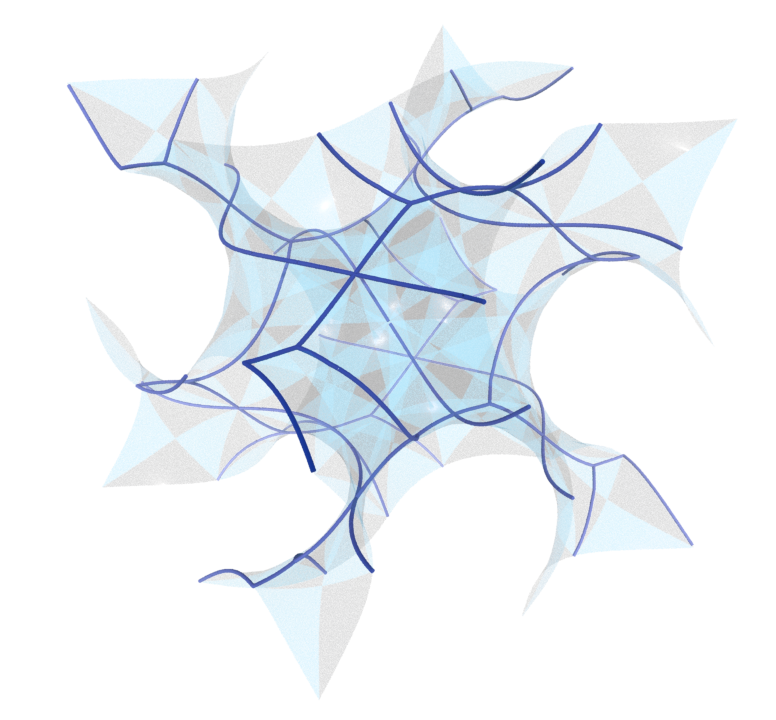Homepage of Benedikt Kolbe
Postdoctoral researcher in mathematics and computer science at the Hausdorff Center for Mathematics in Bonn, Germany.






About

I am a postdoctoral researcher in mathematics and computer science at the Hausdorff Center for Mathematics in Bonn, Germany. I am part of the research group Algorithms and Complexity, and am currently working with Anne Driemel in computational geometry and topology. My current projects revolve around the similarity measures between curves.
Previously, I was part of the GAMBLE group at INRIA, institut national de recherche en sciences et technologies du numérique in Nancy, France, where I worked with Monique Teillaud and Vincent Despré. My focus there was on the computational geometry of hyperbolic surfaces and, in particular, Delaunay triangulations and graph embeddings.
My background in mathematics is primarily in two-dimensional hyperbolic geometry and computational topology, tiling theory, and knot theory in the three-torus. My interests in computer science mainly lie in computational geometry, in particular, geometry processing and geometric algorithms.
I received my PhD in mathematics in 2020 from the department of mathematics at the Technical University of Berlin, under the supervision of Myfanwy Evans and John Sullivan in the geometry and mathematical physics group. I initially had a hard time choosing a major at university so when I finally enrolled at the Humboldt University of Berlin, I majored in mathematics, physics, and music, with a minor in chemistry. I ended up completing a full master’s degree in mathematics (2015) and a bachelor’s degree in physics (2013). Music has been a constant companion in my life and when I don’t play anime music, Rachmaninov, or Chopin, I write my own music.




At first, my primary research interests lay in differential geometry, conformal field theories, gauge theory and formal logic, but I started to feel like I wanted to do something where it was clearer that it could be useful. The research in my PhD thesis had a more applied focus, with tie-ins to crystallography and materials science and an emphasis on enumerations of crystallographic structures from graphs embedded on triply-periodic minimal surfaces such as the gyroid. The implementation of the geometric algorithms developed in theory was another key aspect of my work, driving my research in the direction of computational geometry. The topic is at the interface between mathematical knot theory, hyperbolic geometry and computational topology of surfaces, and also incorporates elements of computer science, chemistry and physics.
During my PhD, we developed a theory of isotopy classes of tilings on hyperbolic surfaces along with the algorithmic tools necessary to use the theory for enumerations. A key role in such investigations is played by mapping class groups of orbifolds, as well as their connection to surface braid groups. Another important aspect involves the use of geometric algorithms, which rely on discrete differential geometric concepts and computational group theory. Although the research was primarily motivated by applications and their implementations, some of the theoretical results that allow for enumerations provided new answers and insights to questions in pure mathematics. On the other hand, the difficulties faced in the implementations led to related problems in computational geometry.

Although I am primarily a mathematician by training, my background in both physics and chemistry as well as the focus of my work on practical geometric algorithms means that a main focus of my research is interdisciplinary. My project in France was again based on similar collaborative research, focusing on geometric algorithms with computer scientists. The project lay at the boundary between hyperbolic geometry and computational geometry. The goal was to study algorithms for the computation of fundamental quantities of hyperbolic surfaces (e.g. diameter, systol, or Delaunay triangulations), with an eye out for theoretical statements that provide new insights into related problems and an emphasis on finding algorithms that allow for practical, robust implementations.
I really enjoy teaching others about the beauty of science and applications and have voluntarily taught courses whenever I could. My teaching experience includes statistics for computer scientists, measure and probability theory, representations of groups in elementary particle physics, several introductory courses in mathematics for mathematicians and physicists in their first or second year of university, as well as courses on object-oriented programming languages for computer scientists. I have taught in English, German, and French.
The best part is that I can talk about mathematics and computer science even when I’m at home, for example during a lockdown.
Honors, Awards, Scholarships
- Teaching award 2023 of the faculty of mathematics and natural sciences of the University of Bonn, included 4000€ cash award
- DAAD scholarship for an extended research stay at the Australian National University, 2017
- Member of the Berlin Mathematical School, a graduate school, 2015-2019
- JASSO scholarship from the Japanese government and scholarship from the Humboldt University of Berlin for a one-year exchange program at Waseda University, Tokyo, 2011-2012
- Scholarship from the German government for a year-long student exchange in Oregon, USA
Links
- Curriculum Vitae
- Contact me by email: bkolbe_at_uni-bonn.de
- Currently employed at: HCM